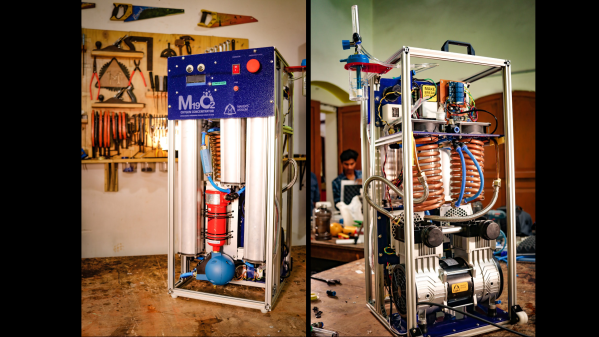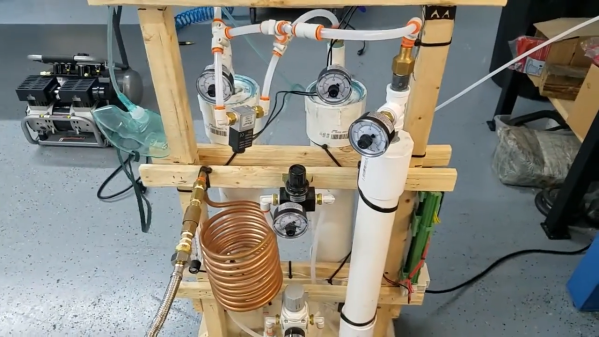A lot of projects we feature on these pages are of the “one and done” variety — tactical builds that serve a specific purpose with little need for further development. Some projects, though, come out as rough prototypes and then go through multiple rounds of refinement, a process we really enjoy tracking down and following. And when the project is something as important as an oxygen concentrator that can be built and maintained easily, all the better.
The need for cheap oxygen concentrators stems directly from the COVID-19 pandemic, which suggested that high-flow oxygen therapy was a better choice than invasive intubations and mechanical ventilation. But medical-grade oxygen isn’t always easy to come by in all parts of the world, so easily built oxygen concentrators, which rely on the nitrogen-adsorbing properties of the mineral zeolite, are meant to fill the gaps. Early versions of the M19O2 and the related OxyKit concentrator, had a very homebrew feel to them, built on wooden frames as they were. And while the rustic nature of the early builds didn’t detract from their utility, the hackers behind them, including our own [Anool Mahidharia], have been making incremental improvements aimed at not only making the devices work better, but also making them easier to build.
The hackers at Maker’s Asylum have done a fantastic job at documenting their work, with everything posted to a GitHub repo so that anyone can undertake a build. And really, for something as important as making oxygen when it’s needed, there’s really no reason not to give this a try.















